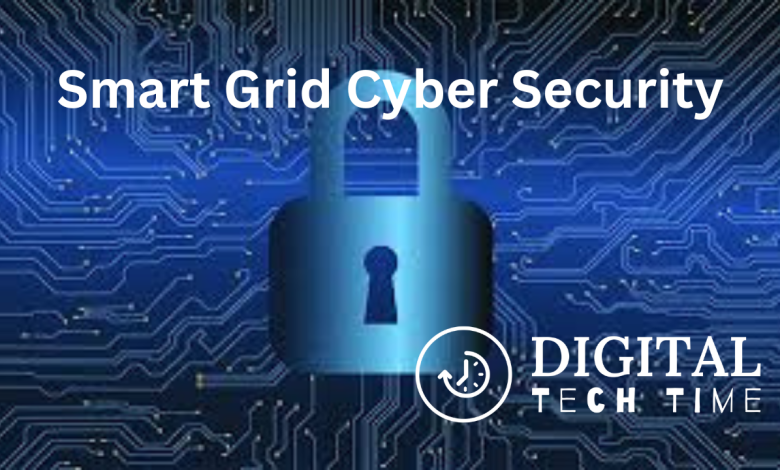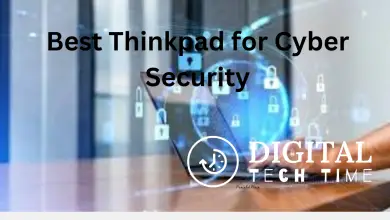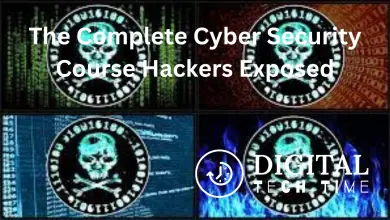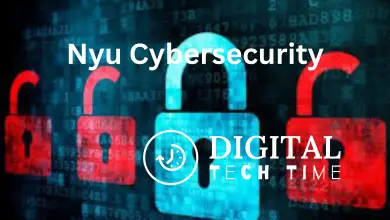Smart Grid Cyber Security: Protecting the Future of Energy

Smart Grid Cyber Security is a critical topic in the energy sector as the world moves towards a more digitized and interconnected grid system. With the increasing use of advanced technologies in the energy sector, the risk of cyber-attacks on the grid has also increased. The Smart Grid is a modernized power grid that uses digital communication and control technologies to manage power generation, transmission, and distribution.
The Smart Grid has many benefits, including improved efficiency, reliability, and sustainability. However, it also presents new security challenges that must be addressed. Cybercriminals can exploit vulnerabilities in the Smart Grid to gain unauthorized access or disrupt the system’s operations. Therefore, it is crucial to ensure that the Smart Grid is secure from cyber threats.
Key Takeaways
- Smart Grid Cyber Security is an essential topic in the energy sector as the world moves towards a more digitized and interconnected grid system.
- The Smart Grid has many benefits, but it also presents new security challenges that must be addressed.
- Cybersecurity measures must be taken to ensure that the Smart Grid is secure from cyber threats.
Understanding Smart Grids
A smart grid is an advanced electrical power delivery system that uses information and communication technologies (ICT) to improve efficiency, reliability, and safety. It is a modernized version of the traditional power grid, which was designed to deliver electricity from power plants to consumers. Smart grids have the ability to monitor, analyze, and control the flow of electricity in real-time, allowing for more efficient use of energy and better management of the power grid.
Smart grids consist of a variety of components, including sensors, meters, communication networks, and control systems. These components work together to collect and analyze data on electricity usage, generation, and distribution. This data is used to optimize the performance of the power grid, reduce energy waste, and improve the overall reliability of the system.
One of the key benefits of smart grids is their ability to integrate renewable energy sources, such as solar and wind power, into the power grid. This allows for a more sustainable energy system that reduces reliance on fossil fuels and helps to mitigate climate change.
Another important aspect of smart grids is their ability to improve cybersecurity. As smart grids rely heavily on ICT, they are vulnerable to cyber attacks that can disrupt the power grid and cause widespread damage. To mitigate these risks, smart grid cybersecurity measures must be implemented to protect against cyber threats and ensure the reliability and safety of the power grid.
Overall, smart grids are a critical component of the modern energy system that offers numerous benefits, including improved efficiency, reliability, and sustainability. By leveraging advanced technologies and implementing effective cybersecurity measures, smart grids can help to create a more resilient and secure energy system for the future.
Cyber Security in Energy Sector

The Energy Sector is one of the most critical infrastructure sectors in the United States, providing essential services such as electricity, oil, and natural gas. With the increasing use of technology and digital systems, the energy sector has become more vulnerable to cyber-attacks. Therefore, it is crucial to ensure the security of the energy sector against cyber threats.
Importance
The importance of cybersecurity in the energy sector cannot be overstated. A successful cyber-attack on the energy sector can have severe consequences, including power outages, environmental damage, and even loss of life. The energy sector is a high-value target for cybercriminals and nation-state actors due to its critical role in the economy and national security.
To address these concerns, the Department of Energy’s (DOE) Office of Cybersecurity, Energy Security, and Emergency Response (CESER) works to secure critical energy infrastructure from cyber, physical, and climate-based threats. The CESER also collaborates with other government agencies, private sector partners, and international organizations to improve the cybersecurity posture of the energy sector.
Challenges
The energy sector faces several challenges in securing its infrastructure from cyber threats. One of the most significant challenges is the legacy systems that are still in use in many parts of the energy sector. These systems were not designed with security in mind and are vulnerable to cyber-attacks.
Another challenge is the lack of cybersecurity talent in the energy sector. There is a shortage of skilled cybersecurity professionals who can design, implement, and maintain secure systems in the energy sector. This talent gap makes it difficult for the energy sector to keep up with the evolving threat landscape.
Moreover, the interconnected nature of the energy sector also poses a challenge to cybersecurity. The energy sector relies on a complex network of interconnected systems that are vulnerable to cyber-attacks. A successful attack on one system can have a cascading effect on other systems, leading to widespread disruption.
In conclusion, cybersecurity is critical to the energy sector’s security and resilience. The energy sector faces several challenges in securing its infrastructure from cyber threats, including legacy systems, talent gap, and the interconnected nature of the systems. Addressing these challenges will require a collaborative effort between government agencies, private sector partners, and international organizations.
Smart Grid Cyber Threats
Smart Grids are vulnerable to cyber threats like any other computer network. Cybersecurity risks to Smart Grids include attackers gaining unauthorized access to grid assets, stealing sensitive data, and disrupting grid operations. The following are common threats that Smart Grids face:
Common Threats
- Phishing Attacks – Attackers send emails that appear to be from a legitimate source, tricking the receiver into revealing sensitive information or installing malware.
- Malware – Malware is malicious software that can be used to steal data or disrupt grid operations. Malware can be installed on a Smart Grid through phishing emails, software vulnerabilities, or other means.
- DDoS Attacks – Distributed Denial of Service (DDoS) attacks can be used to overload Smart Grid systems, causing them to crash and disrupt grid operations.
- Insider Threats – Insider threats can come from employees or contractors who have access to Smart Grid systems. These insiders can steal sensitive data or disrupt grid operations.
Advanced Persistent Threats
Advanced Persistent Threats (APTs) are sophisticated attacks that are designed to evade detection and gain access to sensitive data over a long period of time. APTs can be used to steal sensitive data or disrupt grid operations. APTs can be difficult to detect and require advanced security measures to prevent them.
In conclusion, Smart Grids face a variety of cyber threats that can disrupt grid operations and compromise sensitive data. It is essential to implement robust cybersecurity measures to protect Smart Grids from these threats.
Cyber Security Standards and Policies
Standards
Smart grid cyber security standards are guidelines that help organizations to develop effective cybersecurity strategies tailored to their particular combinations of smart grid-related characteristics, risks, and vulnerabilities. The National Institute of Standards and Technology (NIST) has developed Guidelines for Smart Grid Cybersecurity (NISTIR 7628, Revision 1) that provides a comprehensive framework for addressing cybersecurity risks in the smart grid environment. The guidelines are based on the Risk Management Framework (RMF) and provide a common language and a set of best practices for managing cybersecurity risks.
In addition to the NIST guidelines, other standards organizations have developed standards for smart grid cybersecurity. For example, the International Electrotechnical Commission (IEC) has developed a series of standards that cover various aspects of smart grid cybersecurity, including IEC 62351, which provides a security framework for power system automation and control.
Policies
Smart grid cybersecurity policies are the rules and procedures that organizations implement to manage cybersecurity risks in the smart grid environment. Policies should be based on the organization’s risk management framework and should be tailored to the organization’s specific risks and vulnerabilities.
Policies should cover all aspects of smart grid cybersecurity, including access control, data protection, incident response, and system monitoring. Policies should also be regularly reviewed and updated to ensure that they remain effective in addressing the evolving threat landscape.
Organizations should also ensure that their policies are aligned with applicable regulations and standards. For example, the North American Electric Reliability Corporation (NERC) has developed a set of standards for the bulk power system that include cybersecurity requirements.
In summary, smart grid cybersecurity standards and policies are essential for managing cybersecurity risks in the smart grid environment. Organizations should develop and implement effective standards and policies that are tailored to their specific risks and vulnerabilities, regularly reviewed and updated, and aligned with applicable regulations and standards.
Smart Grid Cyber Security Solutions
As the smart grid system becomes more prevalent, cyber security risks also increase. With the potential for cyber attacks to cause significant damage to the power grid, it is important to implement effective cyber security solutions. In this section, we will discuss some of the technological and strategic solutions that can be used to enhance the cyber security of the smart grid system.
Technological Solutions
One of the most effective ways to improve the cyber security of the smart grid system is through the use of technological solutions. These solutions can include:
- Encryption: Encryption is the process of converting data into a secret code to prevent unauthorized access. By using encryption, smart grid systems can protect sensitive data from being accessed by cyber criminals.
- Firewalls: Firewalls are software programs that protect computer networks from unauthorized access. By using firewalls, smart grid systems can prevent cyber criminals from gaining access to the system.
- Intrusion Detection Systems (IDS): IDS are software programs that detect and prevent unauthorized access to a computer system. By using IDS, smart grid systems can detect and prevent cyber attacks in real-time.
Strategic Solutions
In addition to technological solutions, there are also strategic solutions that can be used to improve the cyber security of the smart grid system. These solutions can include:
- Employee Training: One of the most effective ways to prevent cyber attacks is to train employees on cyber security best practices. By educating employees on the risks of cyber attacks and how to prevent them, smart grid systems can reduce the likelihood of a successful attack.
- Risk Assessment: Conducting regular risk assessments can help smart grid systems identify potential vulnerabilities in the system. By identifying these vulnerabilities, smart grid systems can take steps to mitigate the risk of a cyber attack.
- Collaboration: Collaboration between different organizations can help improve the cyber security of the smart grid system. By sharing information and best practices, organizations can work together to prevent cyber attacks and respond to them in a timely manner.
Overall, implementing a combination of technological and strategic solutions can help improve the cyber security of the smart grid system. By taking proactive measures to prevent cyber attacks, smart grid systems can ensure the reliability and security of the power grid.
Future of Smart Grid Cyber Security
As technology advances, so do the potential risks and threats to the smart grid. In order to maintain a secure and reliable smart grid, it is essential to stay ahead of emerging technologies and regulatory changes.
Emerging Technologies
The smart grid is constantly evolving, with new technologies being developed and integrated into the system. While these technologies can bring significant benefits, they can also introduce new vulnerabilities and risks.
One emerging technology that is of particular concern is the Internet of Things (IoT). IoT devices are becoming increasingly prevalent in the smart grid, providing new opportunities for data collection and analysis. However, these devices are often not designed with security in mind, making them vulnerable to cyber attacks.
Another emerging technology is blockchain. Blockchain has the potential to improve the security and reliability of the smart grid by providing a tamper-proof ledger for transactions. However, the implementation of blockchain in the smart grid is still in its early stages, and there are concerns about the scalability and energy consumption of blockchain networks.
Regulatory Changes
Regulatory changes can also have a significant impact on the future of smart grid cyber security. Governments around the world are increasingly recognizing the importance of cyber security in the smart grid, and are introducing new regulations to help ensure the security and reliability of the system.
For example, in the United States, the Federal Energy Regulatory Commission (FERC) has introduced new regulations to strengthen the cyber security of the bulk power system. These regulations require utilities to implement certain cyber security measures, such as conducting regular risk assessments and developing incident response plans.
In Europe, the Network and Information Systems (NIS) Directive has been introduced to improve the cyber security of critical infrastructure, including the smart grid. This directive requires operators of essential services to implement certain cyber security measures, such as conducting regular security assessments and reporting cyber security incidents.
Overall, the future of smart grid cyber security will depend on a combination of emerging technologies and regulatory changes. By staying ahead of these developments and implementing effective cyber security measures, the smart grid can continue to provide reliable and secure energy to consumers around the world.
Frequently Asked Questions
What are the security threats in smart grid?
Smart grids are vulnerable to a wide range of cyber threats such as data theft, unauthorized access, malware, and ransomware attacks. These threats can lead to power outages, financial losses, and even physical damage to the infrastructure.
How can power grid be protected from cyber attacks?
To protect the power grid from cyber attacks, it is essential to implement robust security measures such as firewalls, intrusion detection systems, and encryption technologies. Regular security audits and assessments can help identify vulnerabilities and gaps in the security architecture.
What are the challenges in securing a smart grid?
Securing a smart grid is a complex process that involves collaboration between different stakeholders such as utilities, vendors, and government agencies. One of the major challenges is the lack of standardization in the security protocols and technologies used in the smart grid ecosystem.
What are the benefits of implementing smart grid security measures?
Implementing smart grid security measures can help ensure the reliability and resilience of the power grid. It can also prevent cyber attacks that can result in financial losses, damage to the infrastructure, and disruptions to the power supply. Additionally, it can help build trust among the stakeholders and boost investor confidence.
What is the role of IoT in smart grid cyber security?
IoT devices such as smart meters and sensors play a critical role in the smart grid ecosystem. However, they also increase the attack surface and introduce new security challenges. To address these challenges, it is essential to implement secure communication protocols, authentication mechanisms, and access controls.
Why is security crucial in developing a smart grid?
Security is crucial in developing a smart grid to ensure the reliability and resilience of the power supply. Cyber attacks can cause power outages, financial losses, and even physical damage to the infrastructure. Moreover, security breaches can erode the trust of the stakeholders and hinder the adoption of smart grid technologies.





